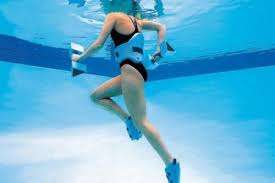Rehab Your Injury
Select your injury type to watch specific stretching and strengthening videos.
Start with light stretching exercises as you start to recover. Stop if you feel the pain intensify while stretching. Only start the strengthening exercises once the pain is gone from the injured muscle. Build up gradually to ensure a smooth recovery.
Click the Play button to play all videos. Click on the Playlist icon, the three bars in the upper left of the video to skip between videos. Once you select a video, click Playlist again to see it play on screen.
Here are some general warm up movements that can be done prior to any athlete activity.
Click the Play button to play all videos. Click on the PlayList icon in the upper left of the video to skip between videos. Once you select a video, click Playlist again to see it play on screen.
Also, visit our Qi Therapies page for additional warm up movements:
Other Helpful Tips
Don’t under treat. If you decide to use the QiVantage recommendation for your pulled muscle or injury, go with our recommendation. We have helped thousands of athletes recover successfully from injury and we are confident in what it takes to get good results. Under treating is like sending a small fire truck to a 5-alarm fire. It does some good, but not enough to make a difference. You may initially spend a bit more and go through more short-term effort, but this is a small price to pay compared to the athlete who struggles with a chronic injury on and off for years.
Move lightly as soon as possible – Lightly stretch the injured area to prevent atrophy and to enhance circulation. Movement also helps break down scar tissue and reform healthy muscle tissue. That said, don’t move too much too soon – you’re body needs time to recover. The first few videos in the playlist for any particular injury will show good stretching movements you can start doing 2-7 days after your injury, depending on the severity of the injury. Always start out lightly.
Build strength gradually – Once pain and tenderness are reduced to low levels, start to strengthen the area while continuing to build flexibility. Later videos in the playlist for a particular injury will give you save strengthen movements to do. If it feels good from the previous day, add a few more reps or a little more resistance.
Get in the water, if possible – If you have access to a pool, start to run or swim in the pool. The buoyancy of water takes the stress off joints and muscles, but also allows you to build strength because of the resistance. Almost all stretches and exercises you can do on land can also be done in the water for effective recovery.
Test it before going full speed – A muscle or joint will feel fine before it is fully recovered, so exercise some patience. Unless you have a championship game or event, work back to your full workouts over days, weeks or months depending upon the initial severity of the injury. In addition to the emotional let-down, healing from re-injury is more challenging than first-time injury recovery.
Train and play smart – Fatigue is a major source of injury. Compounding stresses from events and practices is another major source. Train smarter with QiVantage Performance Series products that promote circulation, energy and relieve daily stresses and strains.

